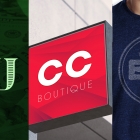Breaking the Campaign Mold
If we ever thought there was one way to campaign for the presidency, the 2008 primary season has changed that opinion forever.
Gone are the days of stumping, baby-kissing and whistle stops. Welcome to the virtual world of in-your-face, on-your-airwaves, everywhere-you-look politicking.
In the past, candidates have employed image makers who managed, guided and refined their guy to make sure he looked and sounded presidential (i.e., electable). More than ever, this year’s candidates have embraced the value of marketing themselves to the American people, and they have hired professionals to help them.
Take a look at the websites for Hillary Clinton, John McCain and Barack Obama. These candidates’ marketing teams have a keen sense of the value of branding and of what it takes to sell a product.
- McCain, Clinton and Obama all have iconic logos.
- All three have blogs and online stores to sell their own branded gear.
- Each candidate’s site offers a variety of video clips and commercials designed to promote themselves and feature their brand in the best possible light.
The 2008 race is historic for a number of reasons…
Barack Obama is the nation’s first African American who stands a real chance of reaching the White House. While some claim that his lack of executive experience makes him less qualified for the post, his marketing team has designed his brand to appeal to a Generation Y who have been notably apathetic about their parents’ politics and who are far from jaded. This target market is tech-savvy, energetic and assertive, and the Obama team has galvanized them in a way that is enviable.
John McCain has been seen as the solid, tried-and-true option for America, and the challenge to his marketing team is to make him more hip and accessible to those who have not fared as well under previous Republican leadership. His marketers have developed a male-friendly brand characterized by the team of McCain Aces (donors) which helps them feel a sense of connection to this member of the generation of senior cohorts.
Hillary Clinton is the country’s first woman who could actually be elected President of the United States. Her branding team has struggled with making Clinton’s image softer and more human, and their choice to feature relevant issue-laden headlines (e.g., “Providing Affordable and Accessible Health Care” and “Supporting Parents and Caring for Children”) and stylish, female-friendly gear connect her brand to a primary target market (women) through an intensely personal connection.
Rather than just using their websites to collect donations and feature news releases, this year’s crop of candidates have created ways to—in very real terms—sell themselves to the American voters.
The only question that remains is, what will we buy in November?
 An agency-eye view of Marketing, Advertising, Branding, Design & Media.
An agency-eye view of Marketing, Advertising, Branding, Design & Media.




